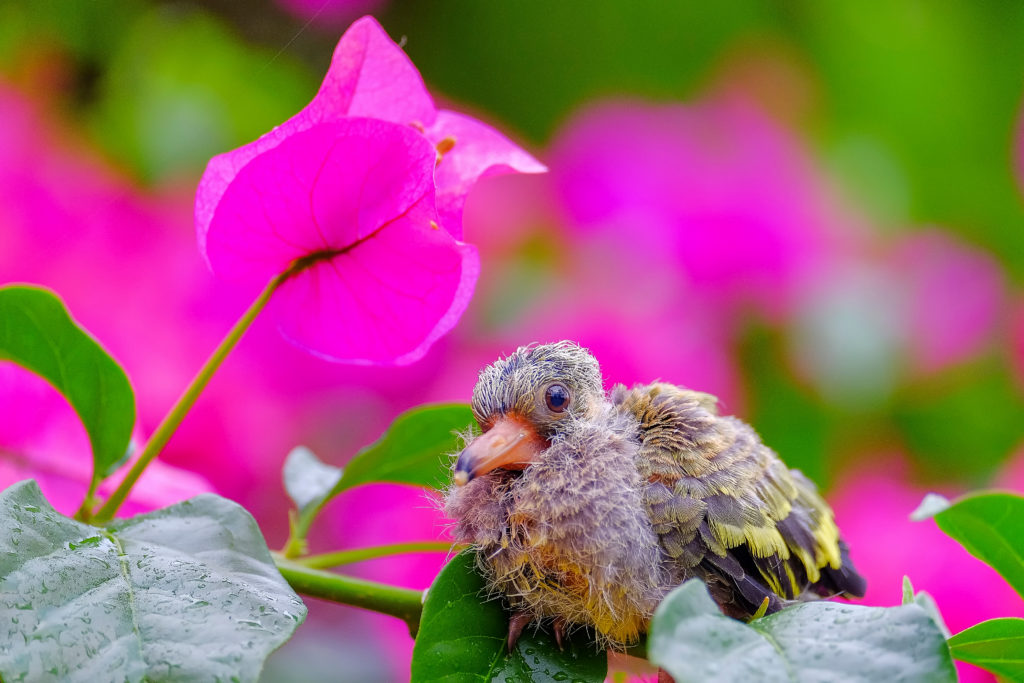Species Survival Plans Save Animal Populations, One Dove at a Time
So, what’s a studbook keeper?

You may have noticed Reid Park Zoo talks about “Species Survival Plans” or “SSPs” quite a bit — but what are Species Survival Plans and who is in charge of figuring out what those plans are going to be?
Alex Zelazo-Kessler, one of the Zoo’s Animal Care Supervisors, has been the studbook keeper for Jambu fruit doves for 5 years. While there are none of these doves at Reid Park Zoo, Alex has a great passion for birds and this bird in particular. She has a record of all the Jambu fruit doves in every AZA zoo: how many there are, who they’re related to, and what their health is like throughout their lives. She says it’s similar to a horse or dog’s pedigree, or human genealogy.
“Being closely involved with a specific species can be very rewarding in many ways,” according to Alex. “I love that I can help to make sure that Jambu fruit doves are able to be seen by zoo guests for a long time to come and that I’ve made contacts with keepers and curators all over the world. If I have questions about almost anything I know an expert in that area!”
Like any other prestigious job, Alex had to apply to be the studbook keeper. “I had to send an application to the Columbiformes T.A.G. (pigeon and dove taxon advisory group). I sent my resume and a letter explaining my qualifications and why I wanted to work with the Jambu fruit dove population. I also needed the Zoo to send a letter stating that they would support me in this position.” She also had to travel to West Virginia to attend two courses run by the Association of Zoos and Aquariums: Population Management I and II.
Species Survival Plans are important for the world’s populations, as these records can help Keepers to make sure that there is enough genetic diversity to breed animals within the AZA community. “The Jambu fruit dove population is very small, only a little over 40 birds, so it’s important that zoos aren’t breeding birds that are too closely related. It’s interesting to me that I can see which zoos or individuals are having lots of success, and try to figure out why. Then I can pass those ‘best practices’ on to other zoos.”
Being a studbook keeper comes with quite a bit of added responsibility, and these books are managed on a volunteer basis, meaning studbook keepers like Alex manage these records on their own time. Alex needs to make sure that zoos that house the Jambu fruit doves are actively communicating with her on all progress made, all new birds hatched, and any updates. It is through that information that Alex decides which doves are moved to different zoos to hopefully breed with the doves that are already housed there. “Because my population is small I need a lot of cooperation from every zoo involved. This year I decided to move several birds to a few zoos that specialize in breeding fruit doves. Understandably, some zoos didn’t want to send their birds away. However, once I explained that I believe that this is the best way to increase the Jambu fruit dove population, most of them were happy to help.”
Another aspect of being a studbook keeper is helping cultivate a good understanding of how these animals are doing outside of zoos, and to ensure they continue to thrive in the wild. “There are several species of fruit doves that are having trouble in the wild. By learning what Jambu fruit doves need to thrive, I am collecting information that may help save an endangered species.”
Alex is excited to branch out beyond the AZA community to make sure that everyone is doing what is best for the Jambu dove’s population. “In a few years, I will have more birds to send to more zoos. I am also hoping to coordinate with a zoo in Singapore that houses Jambu fruit doves. If we can exchange birds it will help the genetic diversity of both our populations. This will take planning and funding, but I am committed to making it happen.”
Managing SSPs are a big undertaking, and thankfully, Alex gets quite a bit of help from other keepers, biologists and members of the animal community. “Every three years I publish my data as a formal AZA Regional Studbook. Once the studbook is published I work with a population biologist at AZA to create a Breeding and Transfer Plan. This is a list of all the current birds, who each bird should breed with, and how many chicks they should have. Genetics play a big part in this part of the plan but I also have to consider where birds are located and the temperament and age of each bird. For example, I would probably not want to send a bird from the East coast to the West coast if a suitable mate could be found one state away. This plan is sent as a draft to all zoos that house Jambu fruit doves and they give me feedback. I take that feedback and create a final Breeding and Transfer Plan. I always include a little extra in my plans such as pictures of successful nests (Jambu fruit doves often don’t make their own nests), or the diets provided to successful breeding pairs.”
Alex has gone above and beyond to help maintain this dove population and to make sure they thrive. Keepers at Reid Park Zoo take amazing care of all the animals housed here, and even animals that aren’t. This is a true testament to supporting the Zoo’s mission to “ensure the protection of wild animals and wild places.”
